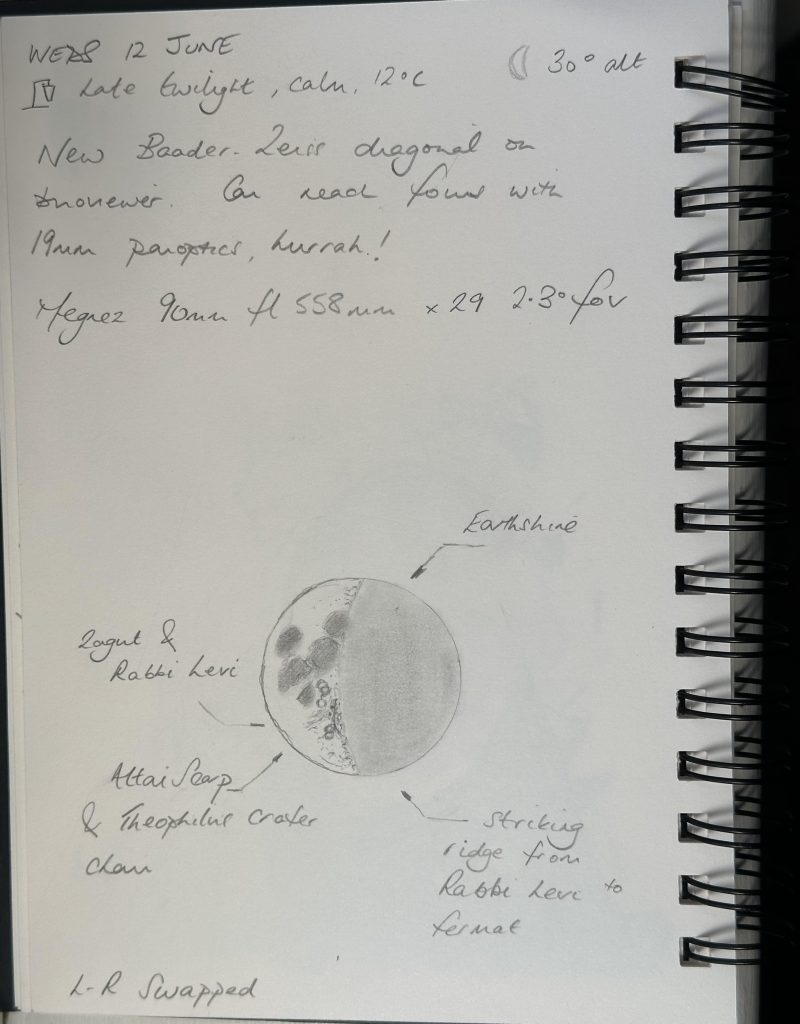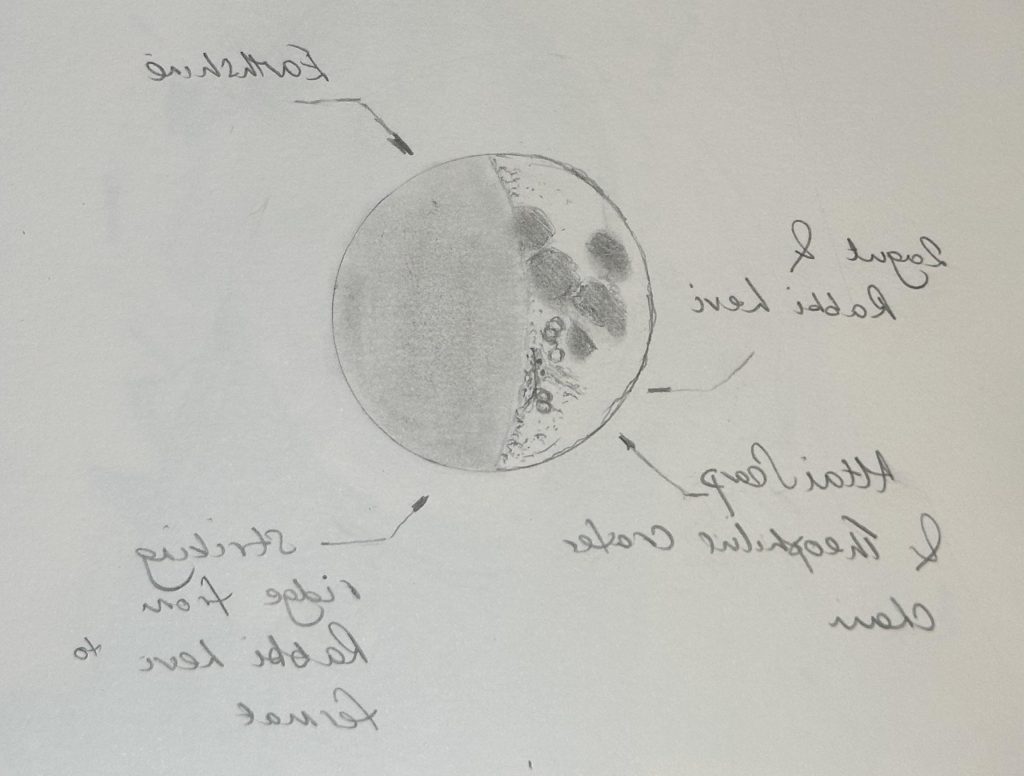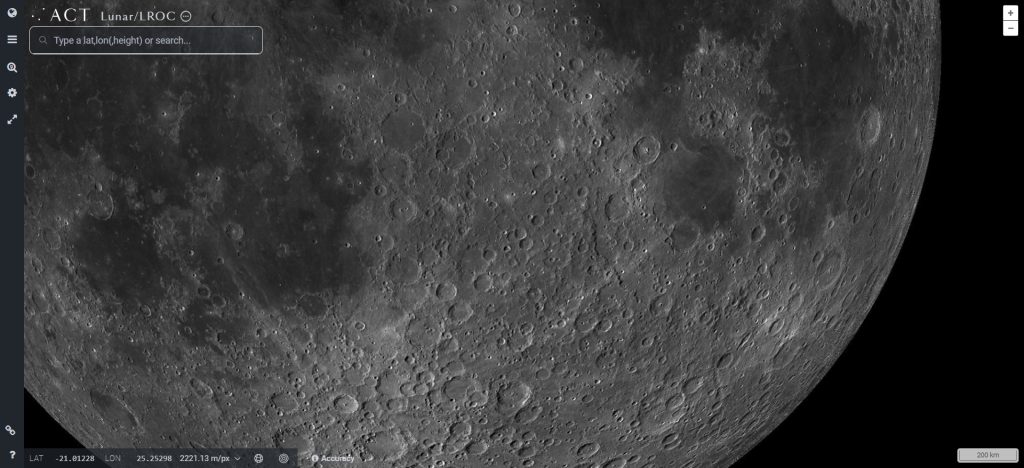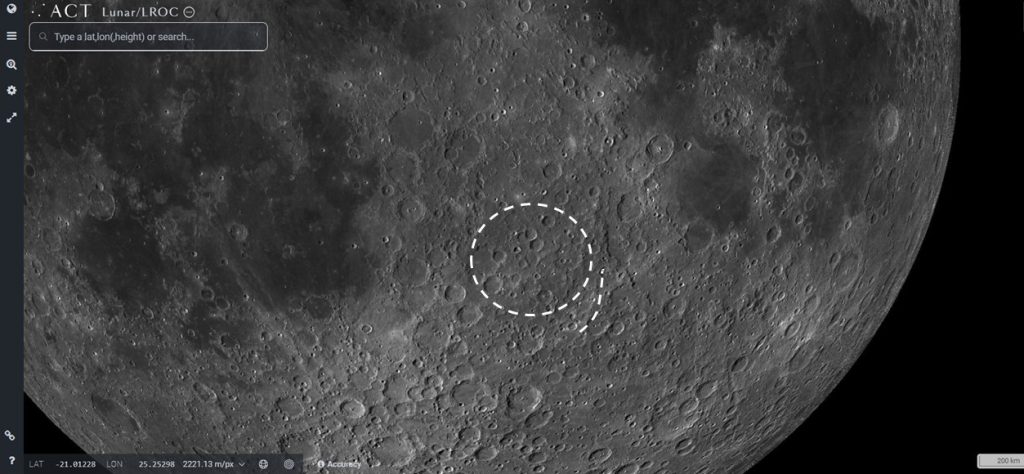12 June 2024 2330UT
Quite warm and still, sky still blue with mid-summer twilight
Megrez 90 on AZ4 with Denk binoviewer 19mm panoptics (29x 2.3O fov)
Salisbury, England
The near first quarter moon (6.2 days old) was shining at about 30 degrees altitude in the southwestern sky. Being so close to midsummer, the sky was still a dark blue and bright enough to see the bats hunting in the cool evening air.

Swinging my scope and binoviewer (with its new Baader Zeiss prism diagonal) revealed the glorious details on the lunar surface as the dark side glowed gently with earthshine. A truly wonderful view – all the better for using a low power, easy to set up rig.
My eye was caught by the Theophilus crater chain and adjacent Altai Scarp. While noting this into my journal my eye was drawn to a striking ridge running approximately north-south from Rabbi Levi towards Fermat. It was casting a prominent shadow that I did not recognise so noted to follow up later.
Searching this feature on LRO QuickMap shows it be the rim of an ancient impact basin, long since covered with fresh craters. It’s quite apparent in the images below. I wonder why I have not noticed it before despite looking at the moon numerous times?
Further searching shows this is the Werner-Airy impact basin, approximately 500km in diameter and hidden in plain sight! Further reading shows I cannot, alas, claim any credit for discovering this feature as it has been noted on Cloudy Nights https://www.cloudynights.com/topic/808594-the-werner-airy-basin-23rd-january-2022/ and also features in Chuck Woods Moon Wiki: https://the-moon.us/wiki/Lunar_Basins_List.
Note I only observed the outer rim of this ancient basin as the basin itself was still hidden in the earthshine. Proof that there are enough lunar features to last a lifetime!
Now to investigate higher power eyepieces for my binoviewer ….


